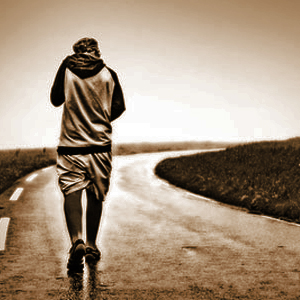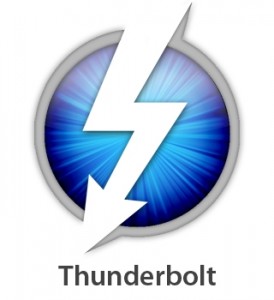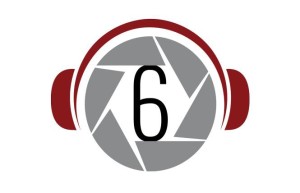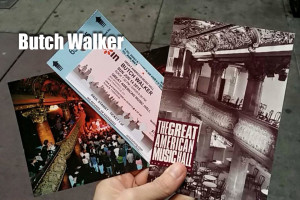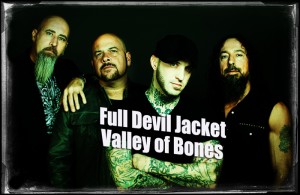So You Want To Buy A Gun… (Part 1 – Pistols)
12 min read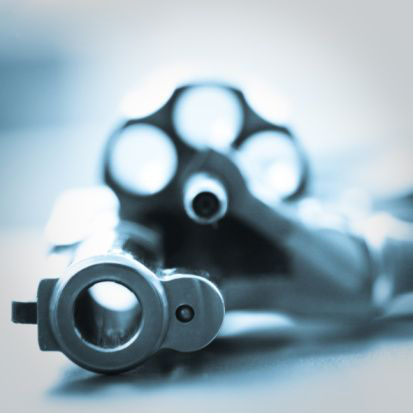
Disclaimer: I am not and do not claim to be a gunsmith. Take everything I say with a grain of salt. If you decide to purchase or even shoot a firearm, contact a retailer or a qualified gunsmith first. They know way more about this than I do, and can give you more, better information than I ever could. Also, I recommend going to a local gun shop/range and taking a firearms safety course if you have never taken one before. I cannot stress this enough.
 When I was asked to write a gun buyer’s guide for Circle Six Magazine, I was reminded of my first experience purchasing a firearm. While we had a few firearms growing up, I never went hunting and only maybe shot a firearm once every 2-3 years (aside from my trusty Red Ryder BB Gun – I never did shoot my eyes out). In 2009, I was recently married and had my first real job and had a little money to spend, and I decided it was time I purchase a handgun. This decision was more difficult than it sounds because I consider myself a pacifist and gun ownership and pacifism don’t always go hand in hand.
When I was asked to write a gun buyer’s guide for Circle Six Magazine, I was reminded of my first experience purchasing a firearm. While we had a few firearms growing up, I never went hunting and only maybe shot a firearm once every 2-3 years (aside from my trusty Red Ryder BB Gun – I never did shoot my eyes out). In 2009, I was recently married and had my first real job and had a little money to spend, and I decided it was time I purchase a handgun. This decision was more difficult than it sounds because I consider myself a pacifist and gun ownership and pacifism don’t always go hand in hand.
Why a handgun? As much as I abhor violence, I abhor the idea of something happening to my wife and our eventual children even more. Yes, there is pepper spray – that is countered by a mask and one can grow immune to it after repeated exposures. Tasers/stun guns are only good for one or maybe two shots. We lived in an apartment complex and couldn’t get an alarm; plus, the police may take up to a minute or two to respond. There is a saying, and while it is rather trite, there is a grain of truth to it: When the seconds count, the police are only a few minutes away. I just didn’t want to leave anything up to chance.
Plus, I’ve always had something of a fascination with them. I’m not mechanically inclined, but I like the feel of the heft, I like taking it apart, I like cleaning it, I like finding out how it works. Also, a good friend (my best man from said wedding) had bought a pistol a few weeks before I started my new job, and it got me to thinking, and after my job started I decided I was going to purchase a pistol.
To be honest, I did not look into it very much. I had looked around a few years prior, before I could even legally purchase a handgun. From that experience, I settled on a Walther PPK/S, a single action, semi automatic, .380 ACP (the gun that was used by the one, the only, 007 James Bond).
What began with the single purchase of a pistol for personal protection started something of an obsession, or as I would like to say, a new “hobby.” And now I’d like to pass all the knowledge I have gained along to you. This will be a series: The first part will be about handguns and their ammunition, the second about rifles and their ammunition, the third about shotguns and their ammunition, and the fourth about the philosophy behind my decision for concealed carry (again, kind of strange for a pacifist) and some conceal carry methods.
However, before I get there, I would like to lay out the 4 rules of gun safety. These are to be followed to the letter every time you are handling a weapon.
RULE I: ALL GUNS ARE ALWAYS LOADED
RULE II: NEVER LET THE MUZZLE (the barrel) POINT AT ANYTHING YOU ARE NOT WILLING TO DESTROY
RULE III: KEEP YOUR FINGER OFF THE TRIGGER UNTIL YOUR SIGHTS ARE ON THE TARGET
RULE IV: BE SURE OF YOUR TARGET
So, that’s it. Now, we have to be practical too. If you are cleaning and disassembling the weapon, you have unloaded and cleared first. How to do that depends on the kind of weapon. I will say this though: If someone hands you a weapon, ALWAYS SAFETY CHECK IT YOURSELF FIRST, EVEN IF YOU WATCHED THEM DO IT. I cannot stress that enough. If you do not know how to safety check a firearm, go to a class. I mean it. Seriously.
PISTOLS
There are two very different kinds of pistols, revolvers and semi-automatic.
Revolver
If you have ever watched a Western, the cowboys are always using revolvers. They are called revolvers because they have a cylinder where the ammunition is kept that “revolves” as you pull the trigger, which moves a new round into place to be struck by the hammer, thus causing the weapon to fire.
There are 3 main kinds of revolver actions.
- Single Action – This means that you must pull the hammer back and lock it in place before you can pull the trigger and fire the weapon.
- Double Action – This means that when you pull the trigger, it moves the hammer back and at the apex of trigger pull, the hammer falls, igniting the round, firing the weapon.
- Single/Double Action – This means it can work either double action or single action. You can lock the hammer back and pull the trigger, or you can keep the hammer down and fire in double action.
Semi-Automatic
Semi-Automatics are in use in almost every military and law enforcement agency in the world. They are also much more difficult to clean and operate than revolvers. To load a revolver, you simply flip the cylinder out, slide the rounds into the cylinder, and then place the cylinder back. To load a semi-auto, you must load a magazine, insert the magazine into the weapon, and then “rack” the weapon, which means pulling the slide back and releasing it, thereby inserting a round into a chamber.
Semi-automatics have 4 actions, as opposed to the 3 of the revolver. Single, Double, and Single/Double are shared between the revolver and semi-auto. (It must be noted that often, with semi-autos, when you rack the slide the back you also cock the hammer. BE VERY CAREFUL!)
The other action associated with semi-autos is called “striker fired.” This is the action used on the Glock series of pistols. There is no hammer to be pulled back like on the other actions. Instead, inside the weapon there is a long firing pin. When you rack the slide, it cocks the striker. The striker is inside the slide, and there is no way of telling if it is cocked or not (although some striker fired pistols have a cocked indicator). This deserves extra attention when handling.
AMMUNITION
Ammunition, at least to me, was by far the most confusing aspect of the firearm world. How come my little .380 caliber pistol was considered underpowered by many while the United States military, as well as most allied NATO countries, use a rifle round that is only .223 caliber? Let me explain.
There are two primary schools of thought when it comes to rifle/handgun rounds. There is either big, slow, and strong (defensive lineman), or there is small and incredibly fast (cornerback). There are also some in-between rounds that are somewhat fast, but not as fast as the cornerback, and are somewhat strong, but not as strong as the defensive tackle (think linebacker). These rounds tend to be concentrated around certain types of firearms. Most of the big, slow, and strong rounds tend to be for pistols, while most of the super fast rounds tend to be for rifles (emphasis on most – there are always exceptions). Further complicating things, some rifles shoot pistol ammo, and vice versa. I am going to go by generalities here for the sake of simplicity.
Also, many of you are asking “What does caliber mean?” There are several different methods of measuring bullet size: the most common being by caliber and millimeter. Both respond to the diameter of the bullet. Caliber means tenths/hundredths/thousandths of an inch (.45 caliber is .45 of an inch in diameter). Millimeter responds to the diameter of the bullet in millimeters (7.62 millimeter). Why the two different methods? One began in Europe (millimeter) and the other began in America (Caliber).
Another measurement is by grain: that is referencing the physical weight of the bullet. It has nothing to do with the circumference of the bullet. You can buy the same caliber bullet with different grains. Example, you can purchase either a 165 grain .40 S&W, or a 180 grain S&W. They will both work in the same gun, are the same round, one is just a tad bit heavier than the other. Why have different weights? Again, school of thought – slow and heavy, or light and fast – depends on the user.
As we go through the ammunitions, I will label them as Semi for semi-automatic, Rev for revolver, or Semi/Rev, meaning that there are weapons for both. Keep in mind that there are always exceptions. For example, there are revolvers that shoot the .45 ACP round. However, they are not very common. I will generally start with smaller rounds and work my way up. However, let it be known that all rounds, even the very small ones, are VERY DANGEROUS. People see how small a .22 is and don’t feel any recoil when shooting so they think “Oh, it’s just a little more than a BB gun, how could it hurt?” There are LOTS of people that are dead that thought the exact same thing. Treat every round with caution and respect.
.22 Long Rifle, or LR (Semi/Rev) – This is what you shoot when you’re at Boy/Girl Scout camp. It has almost no recoil, is very cheap and plentiful, has decent range for a small round, and can take small game/varmints (rabbits, squirrels, raccoons, etc). They are excellent for target shooting because it is incredibly cheap (about 15 dollars for a box of 500 rounds). If you watched the biathlon at the Olympics, the shooters are shooting .22 rifles. (example: Ruger Mark III series)
.25 ACP (ACP stands for Automatic Colt Pistol – you are going to see that a lot) (Semi) – Small round designed for personal defense by John Browning, it was very common and popular in Europe during the first part of the 20th century. The reason for its popularity was because of its small size + small round = a small pistol. They could easily be concealed in a coat pocket. Also, very common amongst officers in European armies, but keep in mind that they did not use their pistols very often in combat – they were generally used to help their fellow soldiers “Do the right thing, comrade.” Little stopping power for a self defense cartridge, but still deadly. (example: Beretta 21 Bobcat)
.32 ACP, or 7.65 Browning (Semi) – Small round designed for personal defense by John Browning. Was more powerful than the .25 ACP, and was thus adopted by many European nations as the round for their standard sidearm. Designed to be used in small, concealable pistols. Considered, along with the .380 ACP, to be the minimum cartridge for self defense. Original round used in the original Walther PPK series, the James Bond gun. (example: Kel Tec P-32)
.380 ACP, or 9mm Short (Kurz in German) (Semi) – Yet another round designed for personal defense by John Browning. More powerful than the .32 ACP, but not readily adopted by militaries. Very common today in small, self defense pistols, especially those with conceal carry in mind, due to the increased stopping power over the .32. Thought of by many to be the absolute minimum for use in self defense. Modern day Walther PPK and PPK/S are chambered in .380. (Example: Sig Sauer P238).
.38 Special (Rev) – revolver round designed by Smith and Wesson. Rapidly adopted by police and military in the United States. It is a good round, but the military did not use it for long because they found it to be underpowered – it was replaced by the .45 ACP in the Colt Government model 1911. It originally used a black powder propellant, but as technology has progressed, so has the round. (Example: Colt Detective Special)
.38 Special +P (Rev) – This is a .38 special round that has a more refined gunpowder behind it (+P is referencing the higher pressure the powder produces while combusting). This makes the round have a faster velocity, thus improving stopping power. VERY IMPORTANT: Do not shoot a .38 Special +P round out of a revolver that is not designed to shoot the +P round – there will be an explosion, and it will not be good. If you have any questions about it, ask your gun dealer (Example: Smith and Wesson model 442).
.357 Magnum (Rev) – slightly smaller than a .38 Special, but very high powered due to its high velocity. Excellent round for self defense. (Example: Smith and Wesson model M60).
9mm Luger or 9mm Parabellum (Semi) – Probably the most common semi-auto round in the world, used by most NATO militaries and many law enforcement agencies. Not as much stopping power as, say, the .45 ACP, but it is a smaller, lighter round, allowing you to carry more ammunition and having less recoil, allowing for a quicker follow up shot and for better shot placement. (Example: Beretta model 92)
.357 Sig (Semi) – Developed by manufacturer Sig Sauer, it is an attempt to put the firepower of a .357 Magnum in a semi-automatic pistol. Very high velocity round, used by some law enforcement agencies. (Example: Sig Sauer P226)
.40 Smith and Wesson (Semi) – A compromise round designed to improve upon the stopping power of the 9MM, yet maintain the ability to easily carry lots of ammunition. Originally developed from the 10mm round, which will not be discussed here as there is not much of a market for it. (Example: Glock 22)
.44 Magnum (Rev) – Massive revolver round, this is the round that Dirty Harry used in the movies. So large it is also used in rifles as a short-range hunting round, and also used in hunting pistols. (Example: Colt Anaconda)
.45 ACP (Semi) – Developed in 1904 by Samuel Colt. Following the slow but strong philosophy, some of the heavier .45 rounds reach up to over 200 grains in weight. Used by the US military until the 70s. Very popular self defense round due to stopping power(Example: Colt 1911)
.45 Long Colt (Revolver) – Revolver round designed used by US army for 20 years in the 19th century. Still commonly used amongst cowboy action shooters and for self defense and for short range hunting. Some rounds are over 300 grain, but this weight limits their distance and velocity. (Example: Ruger Alaskan)
Those are, to me, the most popular pistol cartridges in the United States. There are literally hundreds of pistol cartridges, and there are simply too many to list here. If you are going to purchase a first pistol, I would go with a 9mm, .38 Special, .40 S&W, or a .45 ACP, because those rounds are powerful enough for self defense yet common enough that you would have no problem finding them in a store, allowing for easy practice. If you just want something to use for target practice or shooting tin cans, you can’t beat a .22.
Common Makes/Brands
There are lots of pistol manufacturers, some better than others. Some make more revolvers than semis, and vice versa. Some make only one or the other. I am going to list out some pistol manufactures and then give them a cost/quality analysis. These represent my opinion and my opinion only. These too are generalizations. When I say that Springfield Armory is mid quality, mid price, I am referring to most of the items they sell. Like General Motors, they have their own Cadillac lineup of high end items, but it represents a minority of what they sell.
Heckler and Koch – High quality, high price, Semi-auto only
Sig-Sauer – High quality, mid to high price, Semi-auto only
Glock – High quality, mid price, Semi-auto, striker fired only
Smith and Wesson – Makes a wide range of weapons, from low quality to high quality, and the same goes with price. They make just about every kind of pistol under the sun.
Springfield Armory – Mid quality, mid price, semi-auto only
Ruger – Low to mid quality, mid to low price, semi-auto and revolver
CZ – Mid to high quality, mid to high price, semi-auto only
Colt – High quality, high price
FN Herstal – High quality, mid price
Beretta – High quality, mid price
Bersa – Low to mid quality, low to mid price
Kahr – Mid to high quality, mid to high price
Kel-Tec – Low to mid quality, low price
Hi-Point – Low quality, low price
Some of you may be wondering, “Some things are high quality but mid price, why are some high quality AND high price?” Well, there’s something called the second kind of cool, the kind that comes from a brand name, or from a reputation. Heckler and Koch pistols are made in Germany and are used by many of the elite military units of the world. This allows H&K to charge more because they have an “exclusive” reputation.
Further, if you go to the manufacturer’s website, the prices are much higher than you would usually play in a gun store, as the prices at the web site are MSRP. For a much more realistic idea on price, go to budsgunshop.com. While you cannot purchase weapons on there without a very expensive dealer license, it does give a good idea as to prices.
So, that pretty much sums up pistols! There is a WHOLE lot more info out there. This is just a primer, and nothing beats hands on experience. See you soon when we’ll talk about rifles!
